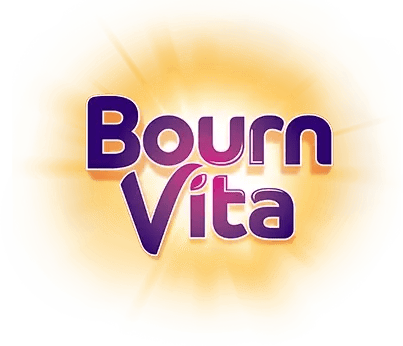- Moong Dal (Yellow Split Moong)
- Ragi (Finger Millet)
- Jaggery (Gur) in Small Amounts
- Cooked Spinach (Palak)
- Masoor Dal (Red Lentils)
- Roasted Poha (Flattened Rice)
- Dates (After 9 Months)
Introduction
Iron is one of the most important nutrients for your baby in the first few years, especially after 6 months when their natural iron stores start to deplete. This is also the time when solids are introduced, and choosing the right first foods is more than just a milestone. It’s your baby’s first step into nutrition that supports growth, brain development and energy.

For Indian households, the good news is that traditional foods already have many iron rich options. It can be soft dal mash, a spoonful of ragi porridge or mashed greens with a spoon of ghee, there are ways to sneak iron into your baby’s meals using ingredients you cook with daily. And as your little one grows, textures can move from smooth purées to soft finger foods like cooked beetroot sticks or flattened poha patties, all while keeping nutrition in mind.
It’s not about complicated recipes or expensive ingredients. It’s about knowing which Indian foods naturally have iron and how to introduce them at the right time and in the right form. Whether your baby is just starting solids or ready to try bite-sized bits, these iron-rich options help lay the foundation, silently nourishing every giggle, crawl and nap along the way.
7 Indian Iron-Rich Foods for Babies From First Spoon to Finger Food

Introducing solids is a big step for your baby, but it’s also a meaningful time to support their growing nutritional needs. Around 6 months of age, babies begin to need more iron than breastmilk alone can provide. Iron supports brain development, muscle function, and energy, all critical during these early months of crawling, exploring, and learning. But instead of reaching for supplements right away, you can start by gently building iron into your baby’s meals with familiar Indian foods.
Here are 7 Indian iron-rich foods that suit different stages of early feeding, helping your baby get what they need—one gentle bite at a time.
Moong Dal (Yellow Split Moong)
Moong dal is often one of the first foods offered to babies, and rightly so. According to the Ministry of Health and Family Welfare Government of India, it’s light, easy to digest, and rich in plant-based iron. A simple moong dal khichdi or moong mash with a bit of ghee is soothing and satisfying. As your baby adjusts to textures, you can make it thicker or mix it with mashed veggies like carrots or pumpkin. It also offers protein, making it a complete meal for early weaning stages.
Ragi (Finger Millet)
Ragi is one of the most iron-rich grains available and is often used in South Indian baby food. As per a study published in Evid Based Complement Alternat Med. 2021, it’s packed with calcium too, making it excellent for growing bones. Start with ragi porridge made from sprouted ragi flour, gently cooked with water and breast milk or formula. As your baby grows, you can make ragi pancakes or soft dosas for self-feeding. The earthy taste is usually well accepted when introduced early and consistently.
Jaggery (Gur) in Small Amounts
Research conducted by, Indian J Hematol Blood Transfus. 2025, states that while jaggery shouldn’t be overused, a small amount after 9–10 months can help boost iron levels in meals. Unlike refined sugar, jaggery retains iron and other minerals. A pinch of it in ragi porridge or moong dal gives a mild sweetness and makes meals more enjoyable for some babies. Always ensure jaggery is clean, chemical-free, and well-cooked into the food to avoid choking hazards.
Cooked Spinach (Palak)
As per a study published in J Food Sci Technol. 2016, spinach is a great source of non-heme iron and works well in baby meals when cooked thoroughly and pureed smooth. Palak can be blended into moong dal or mixed with rice for a nutritious mash. After 9–10 months, you can chop and cook it into soft theplas or mix it into veggie patties. Adding a bit of vitamin C-rich food (like lemon or tomato) improves iron absorption from spinach naturally.
Masoor Dal (Red Lentils)
Masoor dal cooks faster than most pulses and has a slightly sweet taste, perfect for babies. According to FSSAI, it’s iron-rich, protein-packed, and softens into a smooth consistency with minimal effort. You can serve it as a basic dal or mix it into khichdi with rice and a few soft veggies. Once your baby is ready for finger foods, try shaping thick masoor dal mash into patties and shallow-frying them for a baby-friendly snack.
Roasted Poha (Flattened Rice)
According to the Dietary Guidelines for Indians, poha is often overlooked, but when made with iron-rich ingredients like peanuts and veggies, it becomes a powerhouse. For babies, start with plain, soft poha mashed with ghee and a bit of moong dal. As they grow, roasted or lightly pan-fried poha patties with mashed potatoes or beetroot make excellent finger foods. Using iron cookware while preparing poha can also naturally increase the iron content.
Dates (After 9 Months)
Soft dates can be introduced in small quantities after 9 months. According to a study published in Curr Dev Nutr. 2021, they’re rich in iron and natural sugar, helping babies maintain energy throughout the day. You can mash one date into porridge or grind a few with ghee and roasted nuts (if already introduced) to make tiny date laddoos. These are perfect for toddlers learning to self-feed and can be made in advance and stored.
Conclusion

Iron doesn’t have to come from pills or enriched powders; it can come from your kitchen, your culture, and your everyday meals. Foods like dal, ragi, palak, and poha have long supported growing children in Indian homes. With a little planning and the right timing, you can build a strong, nourishing foundation for your baby, one spoon, mash, and finger food at a time.
Her love for storytelling began with reading her grandfather’s speeches, where Tarishi saw the power of words in creating lasting memories. Combining her passions for food and writing, she has turned her life into a fulfilling path of sharing stories that celebrate flavours and how food brings communities together.
The views expressed are that of the expert alone.
The information provided in this content is for informational purposes only and should not be considered a substitute for professional medical advice, diagnosis, or treatment. Always seek the advice of your physician or another qualified healthcare provider before making any significant changes to your diet, exercise, or medication routines.
References
https://pmc.ncbi.nlm.nih.gov/articles/PMC8546153/
https://www.nin.res.in/downloads/DietaryGuidelinesforNINwebsite.pdf
https://fssai.gov.in/upload/EATRIGHTINDIA/English.pdf
https://pmc.ncbi.nlm.nih.gov/articles/PMC4926910/
https://pubmed.ncbi.nlm.nih.gov/40224691/
https://pmc.ncbi.nlm.nih.gov/articles/PMC8545543/
https://nhm.gov.in/images/pdf/Nutrition/MAA-training-material/IYCF%20Training%20module.pdf
















